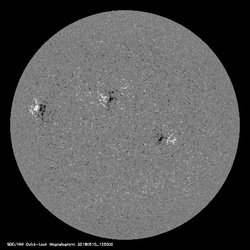 May 10, 2018 John E. Ross, KD8IDJ, Editor
| ||||||
ARRL Executive Committee Hears Updates on Parity Act, FCC Petitions, Small Satellites Meeting on April 21 in Windsor, Connecticut, the ARRL Executive Committee (EC) heard a status update on the Amateur Radio Parity Act and on regulatory matters from ARRL General Counsel Chris Imlay, W3KD. Imlay reported that ARRL continues to work multiple avenues in its efforts to secure passage of the bill. He said ARRL continues to have solid support from House leadership, and most notably from Representative Adam Kinzinger (R-IL), who, Imlay noted,
has worked tirelessly to see the Parity Act become law. Regulatory The EC also discussed the FCC's recent Notice of Proposed Rulemaking (NPRM) regarding the deployment of "small satellites" by colleges, universities, and commercial entities using experimental licenses on Amateur Radio spectrum. The EC was told that the International Amateur Radio Union (IARU) has changed its previous policy regarding the coordination of small satellites (CubeSats), and that FCC policy is overly restrictive in some respects and insufficiently protective against commercial exploitation of amateur spectrum in other respects. AMSAT has requested ARRL's input. The EC agreed that ARRL's comments should reflect our support for World Radiocommunication Conference 2015 Resolution 659 and IARU policies. In addition, ARRL (a) will support and encourage college and university Amateur Radio experiments where the sponsor of the experiment is an amateur licensee and all operation is in amateur spectrum, and (b) will discourage commercial or Part 5 experimental operations using Amateur Radio spectrum. The EC asked Imlay to file ex parte comments in support of Petition for Rule Making RM-11775 relating to frequent changing of vanity call signs, and to file ex parte comments on ARRL's Petition for Rule Making, RM-11785, noting that the Canadian government has implemented a new, contiguous 5 MHz band and permitted a power level of 100 W. The EC also requested that Imlay support a request by certain ARRL members for an STA or experimental license for higher terrestrial and EME power levels in the 76 - 81 GHz band, to permit Amateur Radio experimentation.
The EC asked Imlay to share with the National Telecommunications and Information Agency (NTIA) ARRL's concerns regarding an NTIA study to use 3450 - 3550 MHz for mobile wireless applications. That includes a portion of the 9-millimeter Amateur Radio band. Updated OO Program Progress ARRL Atlantic Division Vice Director Riley Hollingsworth, K4ZDH, the new chair of the Amateur Auxiliary Study Working Group, reported via teleconference that he'd met with the FCC's Laura Smith concerning implementation of an updated and improved Official Observers (OO) program. Several attorneys have reviewed the ARRL's draft memorandum of understanding, and several Commission attorneys who have reviewed the new manual for Volunteer Monitors will be providing feedback on the proposal. Once the FCC's comments are received and addressed, the Working Group will present its final report and recommendations to the EC. The EC directed CEO Barry Shelley, N1VXY, to work with the Amateur Auxiliary Study Working Group and Headquarters staff to update the full Board and membership on the status of the OO program and potential changes. In the interim, the ARRL Field Organization may resume making a limited number of OO appointments. ARRL Governance The EC discussed a wide range of options to most effectively update ARRL's Articles of Association and Bylaws and to bring proposed additions or revisions to the full Board for its consideration in July. The Board in January adopted new articles 15 and 16 to make the language of the Articles of Association consistent with Connecticut nonprofit corporation statutory language, but filing these with the state was postponed for additional fine tuning.
Article 16 would indemnify volunteer and staff officers, Directors, and Vice Directors for any action taken or any failure to take action, with conditions similar to those spelled out in Article 15. Pursuant to action at the January Board meeting, the EC reached consensus to develop a revised Policy on Board Governance and Conduct of Members of the Board of Directors and Vice Directors ("Code of Conduct"), using a template from the National Council of Nonprofits and an edited version of the current conduct code. An ad hoc committee was formed to draft a proposal to be presented at the fall Executive Committee meeting and, subsequently, to the full Board. ARRL will publish white papers to explain changes to the Articles of Association, Bylaws, and Code of Conduct, in advance of the July Board meeting. Read more. ARRL Asks FCC to Protect Amateur Radio Millimeter-Wave Bands ARRL has asked the FCC to avoid authorizing developmental technologies in two Amateur Radio bands above 95 GHz that some radio amateurs may be unaware of. ARRL commented on May 2 in response to a Notice of Proposed Rule Making and Order (NPRM&O) in ET Docket 18-21, released in February. The so-called "Spectrum Horizons" proceeding seeks to make the bands above 95 GHz "more readily accessible for new innovative services and technologies." ARRL said that, while it agrees that "regulatory flexibility is justified" in the millimeter-wave bands above 95 GHz, due to the extensive frequency re-use possibilities, the FCC ought to make two "The amateur allocations require protection against increases in the noise floor due to aggregate radio frequency devices," ARRL said. "The bands are used ubiquitously and unpredictably, typically, but not always, at high elevations for research and development purposes and propagation studies, for terrestrial point-to-point, satellite, and Earth-Moon-Earth communications experimentation." ARRL said it would oppose "any proposal to permit unlicensed devices or largely unregulated experimental operations" in the two primary Amateur Radio allocations in the range of spectrum the FCC is considering. "It is critical to preserve for Amateur Radio experimentation the current relatively quiet noise floor, and the positive RF environment that now exists in those two relatively small band segments," ARRL told the FCC. The League's comments noted that the secondary Radio Astronomy Service in those two bands also requires a quiet RF environment.
"Overall, the Commission is on the right track in this proceeding," ARRL allowed. "Opening the millimeter-wave bands to expanded unlicensed operation is not unreasonable. Some, but not all, of the bands above 95 GHz can be removed from the Part 15 restricted band list without significant concern." But, ARRL concluded, "the Amateur Radio primary allocations at 134 - 136 GHz and 248 - 250 GHz, which are shared with radio astronomy, should be unavailable for either Part 15 operation or for other commercial development." Read more. The Doctor Will See You Now! "RF Loss" is the topic of the latest (May 10) episode of the "ARRL The Doctor is In" podcast. Listen...and learn!
Every 2 weeks, your host, QST Editor-in-Chief Steve Ford, WB8IMY, and the Doctor himself, Joel Hallas, W1ZR, will discuss a broad range of technical topics. You can also e-mail your questions to doctor@arrl.org, and the Doctor may answer them in a future podcast. Enjoy "ARRL The Doctor is In" on Apple iTunes, or by using your iPhone or iPad podcast app (just search for "ARRL The Doctor is In"). You can also listen online at Blubrry, or at Stitcher (free registration required, or browse the site as a guest) and through the free Stitcher app for iOS, Kindle, or Android devices. If you've never listened to a podcast before, download our beginner's guide. Support ARRL When Shopping for Mother's Day Mother's Day is Sunday, May 13. If you're looking for the perfect gift, shop at AmazonSmile and choose American Radio Relay League Inc. (ARRL) as your charity of choice. With every purchase you make at AmazonSmile, Amazon will make a contribution to ARRL. This helps the League to extend its reach in public service, advocacy, education, technology, and membership.
ARRL Announces 2018 QST Antenna Design Competition The 2017 QST Antenna Design Competition was such a success that ARRL is doing it again this year, with a special twist. The 2018 competition challenge is to design the best LF, MF, or HF antenna for limited space applications. Entrants should send their best designs for evaluation according to the competition rules. Even designs that don't win a prize might still be eligible for publication in a future issue of QST. Only one entry per person (or team) can be accepted. The submission deadline is September 1, 2018, which allows plenty of time to build and test designs.
Design and Submission Requirements Antennas must be designed for one or more bands between 2200 meters and 10 meters, must fit within a 30 × 50 foot area, and stand no taller than 30 feet at any point. Participants must submit:
All antennas based on submitted designs must be the sole creations of the entrants and not available for sale. Winners will be chosen based on ingenuity of design, mechanical and electrical safety, expected performance, and durability. The judges' decisions are final. Entrants must be ARRL members. ARRL staffers and QST advertisers are not eligible. Mail entries to: QST ATTN: Antenna Design Competition 225 Main St. Newington, CT 06111 Participants also may email their entries, including call sign and subject line of "2018 Antenna Design Competition." Those who need to submit more than 6 MB of material should use separate email messages. Do not send compressed ZIP files, as these will be rejected. Full details will appear in the June 2018 issue of QST. Third Public Test of FT8 DXpediton Mode Deemed a Success The third public test of FT8 DXpedition Mode on May 5 is being called a success. The goal of the exercise was to simulate a rare DXpedition pileup on FT8 by having many stations ("Hounds") calling and trying to contact a designated pseudo DXpedition station ("Fox").
Taylor said a shift from the announced operating frequency to 14.115 MHz was necessary before the test got under way to avoid RTTY contest activity. "Soon after 1400 UTC, they also learned that W1/KH7Z had some unexpected setup problems and was unable to continue," he added. As a result, consequently W7/KH7Z took over as the Fox at 1425 UTC and continued operating until 1600. K1JT was the Fox between 1600 and 1700 UTC, and G4WJS stepped in for a short bonus run between 1710 and 1750 UTC, Taylor recounted. FT8 DXpedition Mode permits a DXpedition station (Fox) to work several stations at a time, utilizing different "slots" for each contact. The downside is that the greater the number of parallel slots, the less power for each slot, with a penalty of 14 dB for five slots.
The WSJT development group plotted the equivalent hourly contact rate for each 5-minute interval at W7/KH7Z. "This test run has shown that peak QSO rates with FT8 DXpedition Mode can approach 400 per hour, and that sustained rates well above 200 per hour will be readily achieved in good conditions," Taylor concluded. He said the test also helped the team to identify "a few relatively minor software bugs" that need to be fixed. Read more. Historic NSS Call Sign to be Reactivated for Naval Radio Station's 100th Anniversary Historic US Navy call sign NSS will be reactivated during the 100th anniversary of the former Naval Radio Station in Annapolis, Maryland. Members of the US Naval Academy Radio Club (W3ADO) and the Potomac Valley Radio Club (W3GRF) will return the historic call sign to the air during the Armed Forces Day Crossband Military/Amateur Radio Communications Test this weekend.
NSS began operation in 1918 as the Annapolis High Power Radio Station using two Federal Telegraph Company 500 kW Poulson arc transmitters and four 600-foot towers, operating in the very low-frequency (VLF) region of the radio spectrum. At that time, VLF was believed to be the only part of the radio spectrum capable of supporting transoceanic radio communication; it would be a few more years before radio amateurs proved the major long-distance communications benefits of frequencies well above 1 MHz.
NSS began regular operation in the HF bands about 10 years later, and that continued until 1976, when the station's HF mission was transferred to Naval Radio Station (call sign NAM) in Norfolk, Virginia. The 1,200-foot central tower and dozens of other towers and masts were demolished in 1999, although three iconic 600-foot Eiffel towers remain at the southern tip of Greenbury Point. A brief video history of NSS is available on YouTube. The website of radio history buff Jim Hawkins, WA2WHV, also offers a virtual tour of NSS. Iowa National Guard Exercise Pushes Communications Interoperability Boundary An Iowa National Guard exercise in late April for the first time saw the use of a common digital mode among military, Amateur Radio, and Military Auxiliary Radio System (MARS) participants on the 60-meter interoperability channels. Military standard communications mode MIL-STD 188-110 was pressed into service to pass digital messages during Exercise Stable Mercury. Because Amateur Radio operators on 60 meters are not symbol-rate limited, all parties were able to use a common digital mode at a higher data rate to pass traffic. For RTTY or digital operation, radio amateurs must transmit on the center frequency of 60-meter channels with a bandwidth no wider than that of a USB signal.
Exercise planner and retired Colonel Rob Hedgepeth, KE0GSN, stated that a major training objective for Exercise Stable Mercury was to train in sending voice and digital messages among the various exercise participants via HF radio. The rationale was that introducing a common digital protocol would increase message throughput over what could be achieved using only voice modes. MARS volunteers Mitch Winkle, AB4MW, and Steve Hajducek, N2CKH, prepared an Amateur Radio version of the software package that MARS members use to interoperate with military units employing the MIL-STD 188-110 serial PSK. Amateur Radio rules impose a symbol rate limit of 300 baud below 29.7 MHz, restricting the types of digital modes that may be used. No such limitation applies on the 60-meter interoperability channels, however, allowing the Amateur Radio community to use the higher-rate Serial PSK mode that MARS and the military use. The FCC proposed revising the Amateur Service Part 97 rules in response to the ARRL's so-called "Symbol Rate" Petition for Rule Making (RM-11708), filed in late 2013. ARRL had asked the FCC to change the Part 97 rules to delete the symbol rate limits in §97.307(f), replacing them with a maximum bandwidth for data emissions of 2.8 kHz on amateur frequencies below 29.7 MHz. Read more. -- Thanks to Army MARS Program Manager Paul English, WD8DBY In Brief...
The K7RA Solar Update Tad Cook, K7RA, Seattle, reports: Sunspots reappeared this week, after none showed from April 28 through May 3. Average daily sunspot numbers over the May 3 - 9 reporting week increased 3.6 to 14.6. So far this year, 56% of the days have been spotless. For all of 2017, the rate was exactly half -- a total of 104 days. In seemingly counterintuitive, yet not unusual, fashion, average daily solar flux declined by 1 point, from 69.3 to 68.3.
Solar activity continues to decline, and over the past few years we've been expecting solar minimum to arrive about 2 years from now. Some observers have suggested, however, that the decline may be more rapid than anticipated. Predicted solar flux is 70 on May 10; 69 on May 11-12; 68 on May 13-15; 67, 69, and 70 on May 16-18; 72 on May 19-25; 70 on May 26; 68 on May 27 - June 8; 70 on June 9; 72 on June 10-21, 70 on June 22, and 68 on June 23. Predicted planetary A index is 12 on May 10; 5 on May 11-16; 42, 12, and 8 on May 17-19; 5 on May 20-31; 18, 25, 20, 16, 12, and 8 on June 1-6; 5 on June 7-12; 42, 12, and 8 on June 13-15, and 5 on June 16-23. Sunspot numbers for May 3 through 9 were 0, 13, 14, 14, 14, 25, and 22, with a mean of 14.6. The 10.7-centimeter flux was 66.5, 67.8, 67.6, 67.2, 69.6, 69.6, and 69.6, with a mean of 68.3. Estimated planetary A indices were 4, 4, 20, 31, 17, 14, and 16, with a mean of 15.1. Estimated mid-latitude A indices were 3, 4, 12, 24, 14, 12, and 13, with a mean of 11.7. Send me your reports or observations to k7ra@arrl.net. Just Ahead in Radiosport
See the ARRL Contest Calendar for more information. For in-depth reporting on Amateur Radio contesting, subscribe to The ARRL Contest Update via your ARRL member profile e-mail preferences. Upcoming ARRL Section, State, and Division Conventions
Find conventions and hamfests in your area.
. .
Subscribe to...
Free of charge to ARRL members...
Find ARRL on Facebook! Follow us on Twitter, Snapchat @ARRLHQ, and Instagram! | ||||||
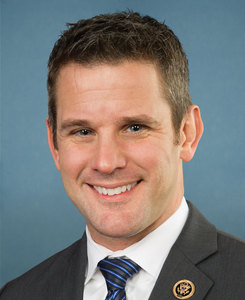
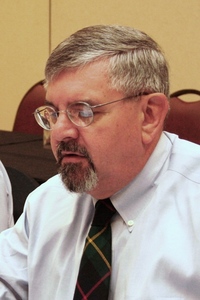
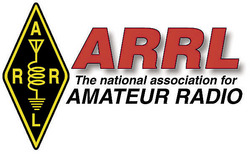 Article 15 addresses the issue of personal liability on the part of Directors, Vice Directors, staff officers, or volunteers regarding breach of duty in their respective roles, provided the breach did not involve a "knowing and culpable" violation of law, improper personal economic gain, a lack of good faith, and conscious disregard or sustained and unexcused pattern of inattention amounting to abdication of duty.
Article 15 addresses the issue of personal liability on the part of Directors, Vice Directors, staff officers, or volunteers regarding breach of duty in their respective roles, provided the breach did not involve a "knowing and culpable" violation of law, improper personal economic gain, a lack of good faith, and conscious disregard or sustained and unexcused pattern of inattention amounting to abdication of duty. primary Amateur/Amateur Radio Satellite bands in that part of the spectrum unavailable for deployment of unlicensed Part 15 or Part 5 Experimental Spectrum Horizons devices. Amateur Radio has primary allocation status in the bands 134 - 136 GHz and 248 - 250 GHz, both shared with the Radio Astronomy Service, which is secondary.
primary Amateur/Amateur Radio Satellite bands in that part of the spectrum unavailable for deployment of unlicensed Part 15 or Part 5 Experimental Spectrum Horizons devices. Amateur Radio has primary allocation status in the bands 134 - 136 GHz and 248 - 250 GHz, both shared with the Radio Astronomy Service, which is secondary.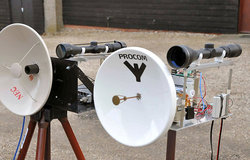 ARRL said it also would oppose the authorization of Spectrum Horizons experimental authorizations in the two primary Amateur/Amateur Satellite allocations, operating under a new subpart for "Spectrum Horizons Experimental Radio Licenses" in the spectrum at issue.
ARRL said it also would oppose the authorization of Spectrum Horizons experimental authorizations in the two primary Amateur/Amateur Satellite allocations, operating under a new subpart for "Spectrum Horizons Experimental Radio Licenses" in the spectrum at issue. Sponsored by
Sponsored by  Make Mom smile; get her something special this year, while supporting Amateur Radio and ARRL. Help to support ARRL all year long: Bookmark ARRL's
Make Mom smile; get her something special this year, while supporting Amateur Radio and ARRL. Help to support ARRL all year long: Bookmark ARRL's 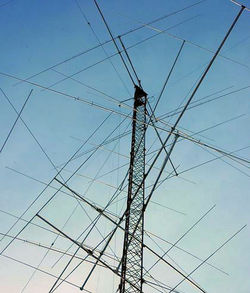 ARRL is offering three cash prizes for this competition. First place is $600, second place is $250, and third place is $150.
ARRL is offering three cash prizes for this competition. First place is $600, second place is $250, and third place is $150.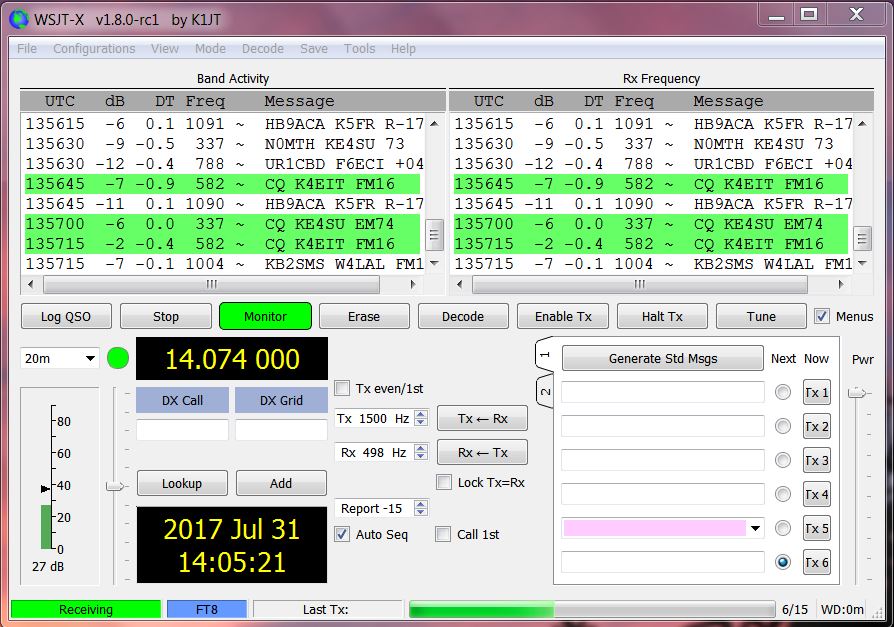 "A number of participants and would-be participants reported that propagation was spotty, at best," said Joe Taylor, K1JT, on behalf of the WSJT development group, which is sponsoring the tests. "Nevertheless, at AA7A, G4WJS, K1JT, and K9AN, we copied 405 unique call signs of stations acting as Hounds, and at least one Fox was worked by 305 of them. Many Hounds worked two or three of the Foxes."
"A number of participants and would-be participants reported that propagation was spotty, at best," said Joe Taylor, K1JT, on behalf of the WSJT development group, which is sponsoring the tests. "Nevertheless, at AA7A, G4WJS, K1JT, and K9AN, we copied 405 unique call signs of stations acting as Hounds, and at least one Fox was worked by 305 of them. Many Hounds worked two or three of the Foxes.".JPG) Taylor said the setup at W7/KH7Z is comparable to what will be used during the KH1/KH7Z Baker Island DXpedition in June. "We operated in ways expected to provide the most thorough tests of the DXpedition Mode software," Taylor said. "The low-power, simple-antenna setup at K1JT may be indicative of what can be done from KH1/KH7Z when band conditions are poor."
Taylor said the setup at W7/KH7Z is comparable to what will be used during the KH1/KH7Z Baker Island DXpedition in June. "We operated in ways expected to provide the most thorough tests of the DXpedition Mode software," Taylor said. "The low-power, simple-antenna setup at K1JT may be indicative of what can be done from KH1/KH7Z when band conditions are poor."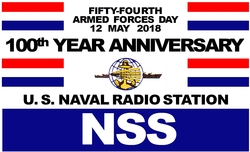 NSS operations from the site of the former Naval Radio Station on Greenbury Point will run from 1300 UTC on Saturday, May 12 to 0200 UTC on Sunday, May 13. Transmissions on CW and SSB will take place on 4,038.5; 5,330.5; 7,533.5; 9,447; 14,487, and 17,545 kHz. NSS will listen for callers on announced frequencies in adjacent Amateur Radio bands. Commemorative QSL cards will be sent for all contacts.
NSS operations from the site of the former Naval Radio Station on Greenbury Point will run from 1300 UTC on Saturday, May 12 to 0200 UTC on Sunday, May 13. Transmissions on CW and SSB will take place on 4,038.5; 5,330.5; 7,533.5; 9,447; 14,487, and 17,545 kHz. NSS will listen for callers on announced frequencies in adjacent Amateur Radio bands. Commemorative QSL cards will be sent for all contacts.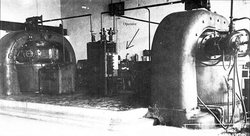
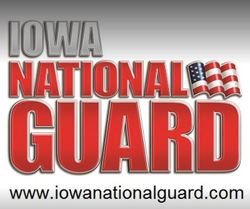 The April 23 - 24 communication exercise involved the deployment of Guard units across numerous incident command posts to operate cooperatively with federal, state, local, and auxiliary units. The scenario for the drill was based on an actual severe weather event that occurred 20 years ago, and the April exercise used radar feeds and storm spotter reports taken from the June 29, 1998, Iowa derecho to inform this training event. A derecho is an extended straight-line windstorm associated with a fast-moving cluster of severe thunderstorms.
The April 23 - 24 communication exercise involved the deployment of Guard units across numerous incident command posts to operate cooperatively with federal, state, local, and auxiliary units. The scenario for the drill was based on an actual severe weather event that occurred 20 years ago, and the April exercise used radar feeds and storm spotter reports taken from the June 29, 1998, Iowa derecho to inform this training event. A derecho is an extended straight-line windstorm associated with a fast-moving cluster of severe thunderstorms.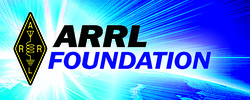 ARRL Foundation Announces New Endowed Scholarship. The
ARRL Foundation Announces New Endowed Scholarship. The 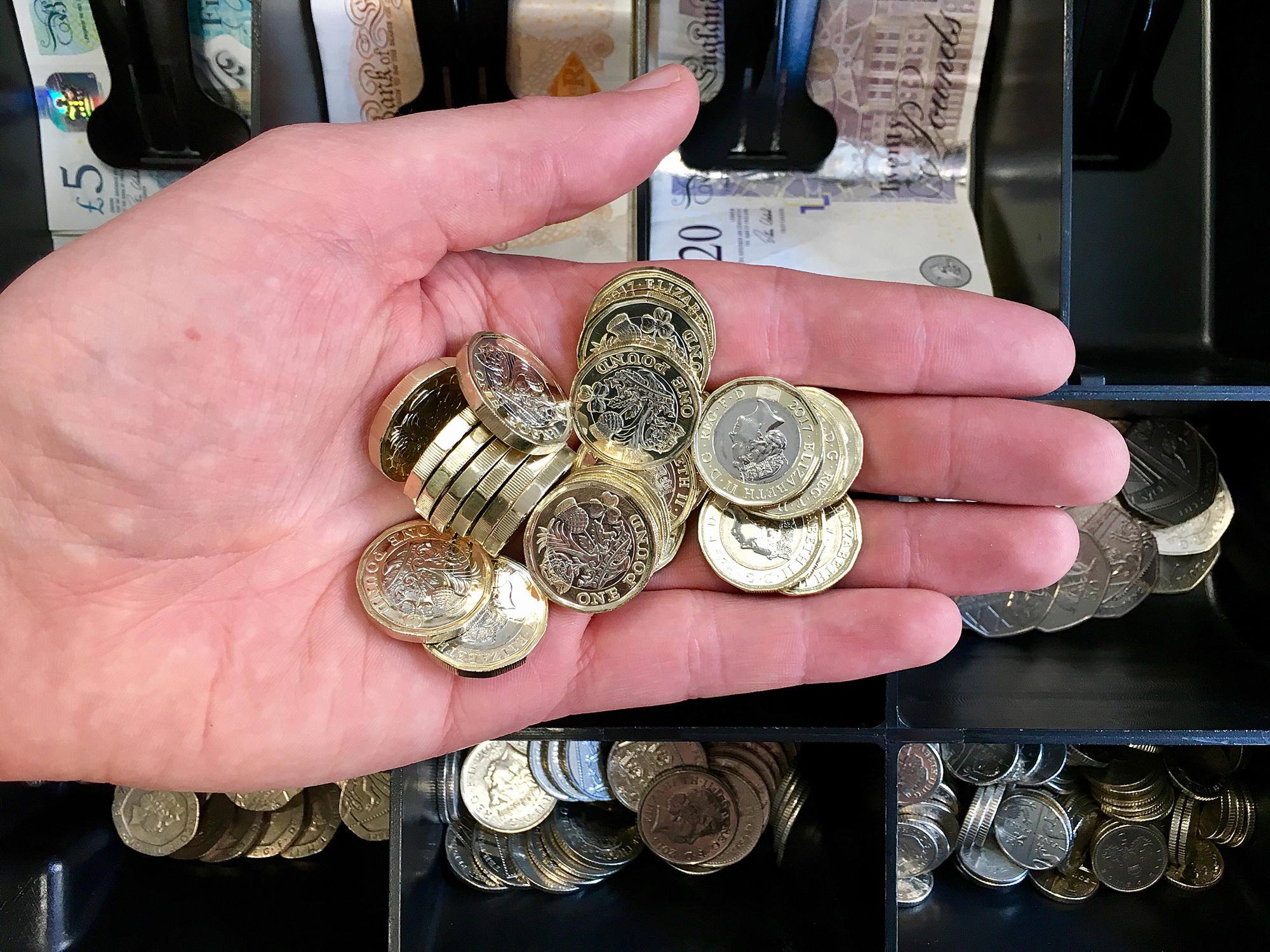 Show me the money! For the second year, the Barry Amateur Radio Society (
Show me the money! For the second year, the Barry Amateur Radio Society (